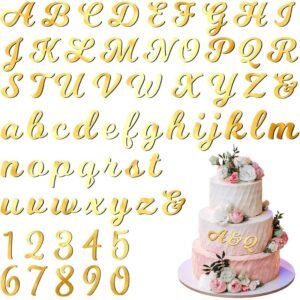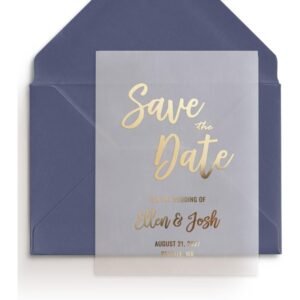Finding your wedding dress shouldn’t feel like solving a Rubik’s cube blindfolded. But with a million silhouettes, fabrics, and opinions flying at you, it’s easy to feel overwhelmed. Don’t worry! We’ve got your back with this super simple find-your-fit guide that’ll have you saying “yes to the dress” with confidence.
Know Your Silhouette: Finding “The One” for Your Body Type
Here’s the truth: every body is wedding dress ready. It’s just about finding the silhouette that makes YOU feel like a million bucks. Let’s break down the most popular styles and who they work magic for.
A-Line (The People Pleaser)
Think of this as the little black dress of wedding gowns – it works for almost everyone! Fitted at the top and gradually flaring out (yep, like the letter A), this style is perfect if you want to:
- Balance out wider hips
- Create curves if you’re more straight up and down
- Keep things classic and timeless
- Move comfortably (hello, dance floor!)
Best for: Literally everyone, but especially pear-shaped and athletic builds.
Ball Gown (The Princess Vibe)
Got fairytale dreams? This one’s fitted through the bodice and then BOOM – dramatic full skirt. It’s Cinderella energy all the way.
Best for:
- Petite brides (the volume adds height!)
- Hourglass figures
- Anyone wanting to hide their lower half
- Making a grand entrance
Watch out: If you’re tall or plus-size, too much poof can overwhelm your frame. Look for softer volumes instead.
Mermaid/Trumpet (Hello, Curves!)
These bad boys hug everything from chest to knee (or mid-thigh for trumpet), then flare out. They’re basically saying “yes, I have curves and I’m showing them off.”
Best for:
- Hourglass figures
- Brides who want drama and confidence
- Showing off your shape
Real talk: These can be tough to walk in, so practice sitting, dancing, and bathroom breaks before the big day!
Sheath/Column (Sleek & Chic)
Straight up and down, following your natural body line. Super elegant, super modern.
Best for:
- Petite or tall and slender builds
- Rectangle body shapes
- Beach or destination weddings
- Brides who hate fuss
Empire Waist (Comfort Queen)
The waistline sits right under your bust, then flows down. Think Regency era or boho vibes.
Best for:
- Pregnant brides
- Apple shapes
- Petite brides wanting to look taller
- Anyone wanting maximum comfort
Pro tip: This style can sometimes look too casual, so choose luxe fabrics to keep it wedding-worthy!
Fabric & Season Match: Don’t Sweat It (Literally!)
Nothing ruins wedding photos like a bride who’s clearly melting or freezing. Let’s match your dress fabric to your wedding date.
Spring Weddings (March-May)
Go for: Chiffon, organza, tulle, lightweight satin Why: Light enough for warming weather but substantial enough for unpredictable spring breezes Avoid: Heavy brocades or velvet (unless you’ve got amazing AC)
Summer Weddings (June-August)
Go for: Cotton blends, lightweight silk, crepe, lace (fully lined) Why: Breathable fabrics that won’t make you sweat through your first dance Avoid: Multiple heavy layers, thick satin, anything that makes you hot just looking at it Bonus tip: Consider a shorter dress or high-low hem for outdoor summer weddings!
Fall Weddings (September-November)
Go for: Mikado, structured satin, lace with sleeves, brocade Why: Richer textures that photograph gorgeously in autumn light Avoid: Super sheer fabrics (goosebumps aren’t cute)
Winter Weddings (December-February)
Go for: Velvet, heavy satin, brocade, thick lace, long sleeves Why: Luxe fabrics that keep you warm and look expensive Avoid: Spaghetti straps without a wrap (unless you want to shiver through cocktail hour) Don’t forget: A stylish wrap, cape, or faux fur stole!
Alteration Timeline & Budget: The Stuff Nobody Warns You About
Here’s a secret: almost ZERO brides wear their dress straight off the rack. Alterations are normal, expected, and honestly where the magic happens.
The Timeline (Work Backwards from Your Date!)
6-9 Months Before: Order your dress
- Most dresses take 4-6 months to arrive
- Rush orders are possible but cost $$$$
2-3 Months Before: First fitting
- Try on your dress with your actual undergarments and shoes
- Discuss major changes needed
- Mark up the dress for adjustments
4-6 Weeks Before: Second fitting
- See the progress
- Fine-tune any issues
- Try on with all accessories
1-2 Weeks Before: Final fitting
- Everything should be perfect
- Do a full dress rehearsal (sit, walk, dance, hug)
- Take it home (carefully!)
Pro tip: Don’t lose or gain weight between your final fitting and wedding day. Seriously, even 5 pounds can affect fit!
Budget Reality Check
Let’s talk numbers because surprises here SUCK.
Average Dress Cost: $1,500-$2,500 Budget-Friendly: $300-$800 (totally doable!) Splurge Territory: $3,000-$6,000+
Alteration Costs (add these on!):
- Hemming: $75-$250
- Taking in/letting out: $50-$200
- Bustle: $50-$150
- Adding cups or boning: $30-$75
- Straps or sleeves: $40-$200
- Rush fees: Add 50-100% to everything
Total realistic budget: Dress price + $200-$600 for alterations
Money-saving hacks:
- Sample sales (dresses up to 80% off!)
- Trunk shows (designer discounts)
- Off-season shopping
- Second-hand (Nearly Newlywed, Stillwhite.com)
- Department store bridal (Nordstrom, Bloomingdales)
Need help tracking all these costs? Check out our free wedding budget calculator – it breaks down exactly how much to budget for attire and keeps you on track!
Groom & Party Coordination: Looking Good Together Without Looking Matchy-Matchy
Your wedding party should look coordinated, not like they’re in a uniform catalog. Here’s how to nail it.
The Groom’s Look
Match the formality, not the exact style:
- Black-tie wedding? He needs a tux
- Beach wedding? Suit or even dress pants + shirt
- Formal ballroom? Dark suit minimum
Coordination tips:
- Pull a color from your bouquet for his tie or pocket square
- His suit color should complement (not match) bridesmaid dresses
- If your dress is super detailed, keep his look simpler
- If your dress is minimal, he can go bolder with pattern or color
Common combos that work:
- White dress + navy suit + blush tie = chef’s kiss
- Ivory dress + gray suit + burgundy accents = fall perfection
- Champagne dress + black tux = classic elegance
Bridesmaids & Groomsmen Coordination
The new rule: They should look like they belong at the same wedding, not like they’re wearing uniforms.
For bridesmaids:
- Same color family, different styles (HUGE trend!)
- Same fabric, different shades
- Completely different colors that work together (jewel tones, earth tones, etc.)
- Let them choose necklines that flatter their bodies
For groomsmen:
- Same suit color, different tie/bow tie colors
- Mix and match vests
- Different sock patterns (fun and trending!)
- Unique boutonnieres for each guy
Bride + Groom should stand out:
- Bride’s dress should be lighter/brighter than bridesmaids
- Groom’s suit should have something unique (different color, boutonniere, fancy shoes)
Budget tip for the party: If you’re choosing the outfit, etiquette says you pay for it OR choose affordable options they can re-wear. Most bridesmaid dresses run $100-$300. Groomsmen suit rentals are $150-$250.
Timeline for Wedding Party Attire
6 months before:
- Choose bridesmaid dress style/color
- Groom picks his look
- Decide on groomsmen attire
4 months before:
- Everyone gets measured
- Place orders
- Choose accessories
2 months before:
- Dresses and suits should arrive
- Schedule alterations if needed
1 month before:
- Final fittings for anyone who needed alterations
- Everyone has shoes, accessories, undergarments
Week of wedding:
- Everyone tries on complete outfit one more time
- Steam/press everything
- Pack backup safety pins, fashion tape, stain remover
Use our wedding timeline generator to automatically schedule all these tasks and reminders. It’s free and takes like 2 minutes!
Your Find-Your-Fit Action Plan
Okay, let’s wrap this up with your actual to-do list:
Step 1: Figure out your body type and which silhouettes to try (hint: try the “wrong” ones too – you might be surprised!)
Step 2: Check your wedding date and season, make a fabric wishlist
Step 3: Set your realistic budget (dress + alterations + accessories)
Step 4: Start shopping 9-12 months before your wedding
Step 5: Book alterations as soon as your dress arrives
Step 6: Coordinate (don’t match!) with your groom and wedding party
Step 7: Use those free planning tools to keep track of everything:
- Wedding budget calculator for all your attire costs
- Wedding timeline generator for fitting schedules
Final Pep Talk
Listen, your wedding dress doesn’t need to be the most expensive thing you’ve ever bought. It doesn’t need to make you look like someone else. It just needs to make you feel like the best version of YOU.
Trust your gut. If you feel amazing in it, it’s the right dress – regardless of what the “rules” say about your body type. If you’re comfortable, confident, and can’t stop smiling? That’s your dress.
And remember, your partner is marrying YOU, not your dress. The dress is just pretty packaging for the actual magic – which is you, showing up, ready to commit to your person.
Now go find that dress and knock ’em dead! 💕
Ready to tackle the rest of your wedding planning? Our free tools make it stupid simple to organize everything from budget to timeline. No more spreadsheet nightmares or forgotten tasks – just easy planning so you can actually enjoy being engaged!





